 Facebook
Facebook
 X
X
 Instagram
Instagram
 TikTok
TikTok
 Youtube
Youtube

San Diego’s richest person is someone I’ve never heard of: Gwendolyn Sontheim Meyer. The Rancho Santa Fe resident owns a 7 percent stake in the family business, Cargill, a purveyor of grain and agricultural commodities with forays into financial services and a hedge fund. For a woman whose estimated worth is $4.3 billion, Meyer keeps the lowest of profiles. She lives and trains horses at her Coral Reef Ranch and is a champion jumper.
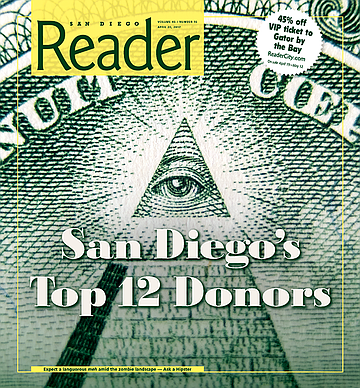
Forbes magazine, whose definitive billionaire lists are the oligarch’s equivalent of the Oscars’ red carpet, drops Meyer into their “Silver Spoon” bowl — those who did absolutely nothing to earn their fortune. All inheritance. Cargill, America’s largest private company, is independently managed but owned by two families. Forbes says, “They are richer than the Rockefellers, Vanderbilts, and Carnegies combined.” Lord knows I’ve searched, but I can’t find any charity she supports. Maybe her giveaways are anonymous. Maybe Meyer is Scrooge McDuck. But many of the gifts of San Diego’s wealthiest donors are well known, in part, because the check-writing moment, if possible to stage, is a media event charities dream of and publicize.
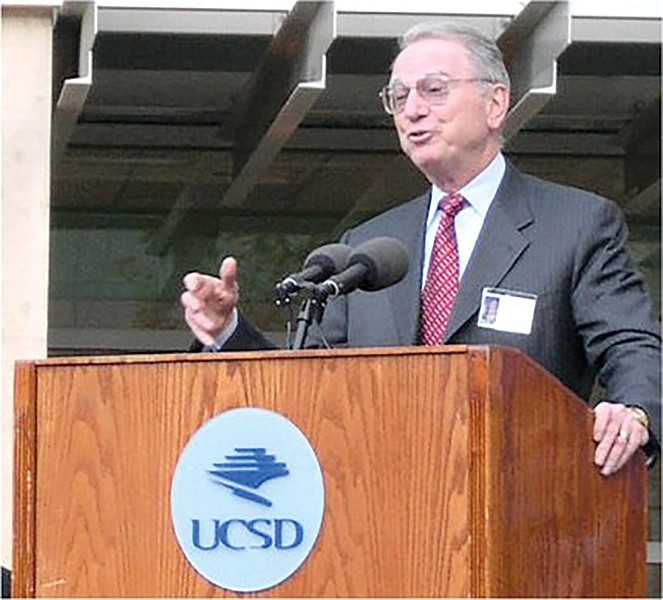
Among the top local recipients of San Diego’s mega-donors are UC San Diego, the University of San Diego, and San Diego State University. Since 2000, UC San Diego has received $730.18 million in donations from all donors (individuals and foundations, nationwide) whose minimum gift is $1 million. (There are thousands of smaller contributors and contributions.) Other beneficiaries during the same time period include the San Diego Foundation ($112.35 million), the San Diego Revitalization Corporation ($72.05 million), and Rady Children’s Hospital ($60 million).
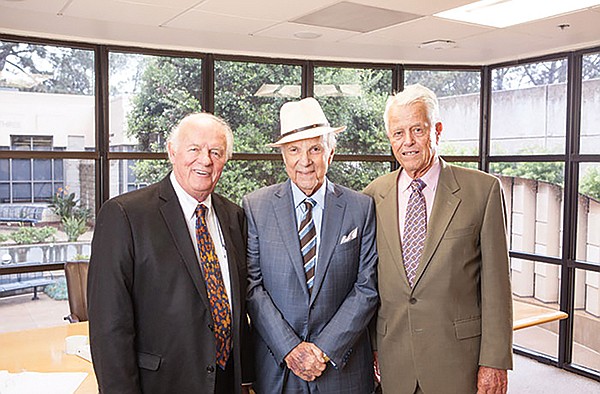
These San Diego donors listed 1–12 here are not arranged by wealth but by the most dollars donated, on occasion indirectly, to local concerns since 2000. The gifts issue from individuals, couples, or family foundations.
Home: (formerly) Rancho Santa Fe
Estimated net worth: $1.7 billion
Major local donations: The San Diego Salvation Army Kroc Center in City Heights in 2002: $87 million | University of San Diego’s Kroc School of Peace Studies in 2004: $50 million | San Diego Hospice and Palliative Care in 2003: $20 million
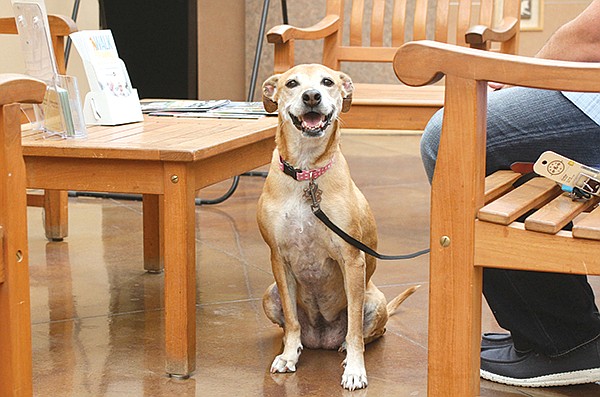
Joan (née Joan Mansfield) was the third wife of Ray Kroc, “The Founder” and CEO of McDonald’s. Ray, who called Joan his “blonde beauty,” died in 1984, and she inherited his real estate holdings on which lay his all-beef-patty empire. Before her death, she gave 14 gifts to charities and causes, schools and communities, social and animal services, to the tune of $1.97 billion. (Among Kroc’s offerings was $1 million to buy and distribute Missile Envy, Helen Caldicott’s 1984 polemic against nuclear proliferation: a copy was sent, 535 in total, to each member of Congress.)
Another Kroc bequest sent $225 million to National Public Radio, which included $5 million for KPBS. She funded the San Diego Zoo and the Opera at $5 million each as well as the Humane Society and Catholic Charities through their national chapters. Those bestowals vitalized local branches. Subsequently, a new state-of-the-art humane society was built on Gaines Street. As part of her largesse, $1.6 billion of the $1.97 billion went to the Salvation Army — the largest single gift to a charity ever recorded — to establish Kroc Centers throughout the country.
La Jolla
Estimated net worth: $1.3 billion
Major donations: University of California San Diego in 2000, 2003, 2004, and 2010: $208.3 million | San Diego Symphony in 2002 and 2003: $120 million | Salk Institute for Biological Studies in 2003, 2008, 2010: $23 million
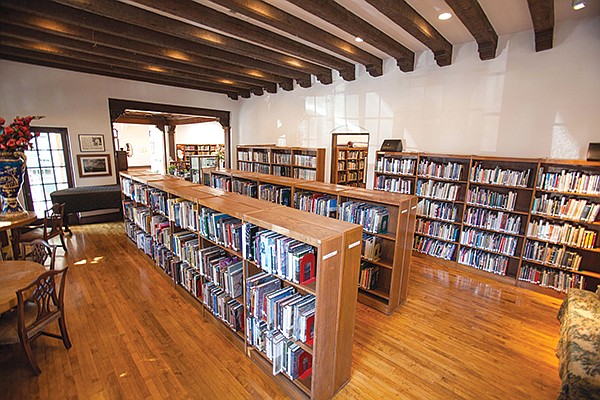
Jacobs made his fortune as cofounder of Qualcomm, where he helped pioneer the communications revolution. The electrical engineer designed some of the first cell-phone technology still in use today. He taught at University of California San Diego from 1966 to 1972, where he continues to endow the Jacobs School of Engineering.
The lion’s share of his other multimillion-dollar gifts has been to higher education as well as to groups that support the arts, culture, and the humanities. Jacobs and his wife, married for 63 years, have also helped carry the La Jolla Athenaeum Library, KPBS radio, the San Diego Natural History Museum, the Central Library, and an overhaul of the ingress and egress to Balboa Park. Over the years, they have contributed $636 million to charities and foundations.
La Jolla
Estimated net worth: $620 million
Major donations: San Diego Children’s Hospital in 2006 and 2014: $180 million | UC San Diego’s Rady School of Management in 2004 and 2015: $130 million | San Diego Zoo in 2013: $10 million
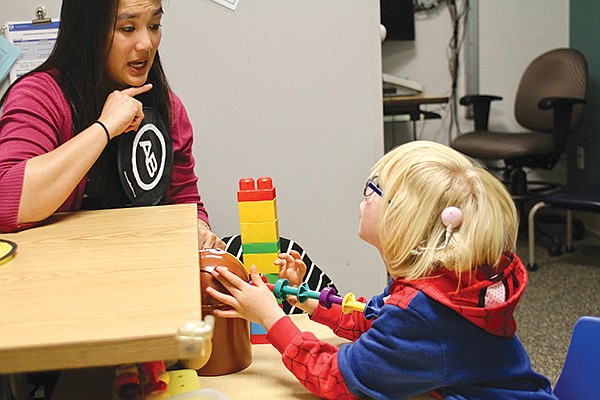
Investment superstar Rady is the chief executive of American Assets Trust, a New York Stock Exchange–traded company that he started in 1967. The real estate investment trust employs 152 people in San Diego and owns or manages multi-family residential and office buildings as well as shopping malls such as Carmel Mountain Plaza in Carmel Valley and resorts such as Embassy Suites in Waikiki, Hawaii. Rady’s annual salary is $757,222.
Graduates of Rady’s School of Management, among the most prestigious schools of business in America, have incubated more than 80 San Diego companies and hatched local revenues totaling $2 billion. Among Rady’s medical interests is pediatric genomics. His money has pushed researchers to decode diseases such as obesity, autism, and asthma, especially as they enfeeble children.
San Diego
Estimated net worth: $800 million
Major donations: City Heights Development Corporation: $200 million | San Diego Revitalization Corporation in 2001: $40 million | San Diego Foundation in 2004: $15.5 million
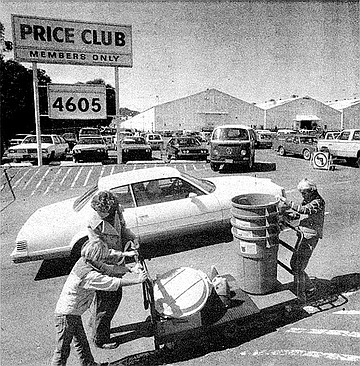
Robert, son of Sol, big-bulk creator of San Diego’s Price Club, runs the erstwhile Price Family Charitable Fund, which is now Price Philanthropies Foundation. Sol, who died in 2009 at 93, sold his warehouse business to Costco in 1994 for $2 billion. The family then built PriceSmart, an international wholesaler, and still owns a 28 percent share. Its annual sales are nearly $3 billion.
Sol, alarmed by the late-1980s rise in gang violence, crack cocaine, and generational poverty in City Heights, took the community under his investment wing. The multiethnic enclave still draws immigrants from war-torn nations to its dense four-square-mile neighborhood, crisscrossed by freeways and thoroughfares and dotted with Craftsman homes.
Benefiting its 74,000 people, shoulder-to-shoulder between Colina Park and Ridgeview, Corridor and Fairmount Park, are low-income apartments and townhomes, a new library and police station, and two new schools. The latest addition is a children’s clinic, catering to families with mental health issues, whose operating expenses Robert Price shored up with a $1.4 million grant.
Point Loma
Estimated net worth: $575 million
Major donations: Sanford Burnham Prebys Medical Discovery Center in 2016: $100 million | Conrad Prebys Performing Arts Center: $65 million | Scripps Health in 2006, 2009, and 2011: $55 million
For years, I thought “Conrad Prebys” was a construction company that designed and erected buildings. I didn’t realize there was a man who’d ponied up the money for these health, education, and arts centers, winning, hands down, the citywide sweepstakes for naming rights. His name is immortalized on a collection of buildings he funded: the Conrad Prebys Aztec Student Union at San Diego State, UC San Diego Prebys Concert Hall, the Conrad Prebys Elephant Care Center at the zoo, and the Conrad Prebys Performing Arts Center — future home of the La Jolla Music Society — set to open in 2019. They’re already calling it “The Conrad.”
Prebys, who died of cancer, donated $45 million for the Conrad Prebys Cardiovascular Institute, a heart hospital in the Golden Triangle. I visited the Prebys as a patient last year. Post-surgery, for my overnight recovery, I was wheeled into a private room. “There must be some mistake,” I said, worried I’d owe extra. “No mistake,” the nurse said. “Mr. Prebys insisted everyone have his own room.”
The San Diego State alumnus, who endowed a chair in its Biology Department for research into viromics (the genetics of viruses), built his empire developing real estate. Over 50 years, he was a housing builder extraordinaire, owning 90 properties and 8000 rental units through his Pacific Beach Progress Construction and Management Company. His life partner is Debbie Turner, who continues to give away money. Indeed, San Diego musicians might still be playing in garages if not for Prebys’s demanding ear. The best estimate of his local donations floats, like the Jacobses’ buoy, near the half-billion mark.
Rancho Santa Fe
Estimated net worth: $1.5 billion
Major donations: West Wireless Health Institute in 2009 and 2010: $70 million | Gary and Mary West Senior Emergency Care Unit at UC San Diego: $11.8 million | Gary and Mary West Senior Wellness Center: $2 million
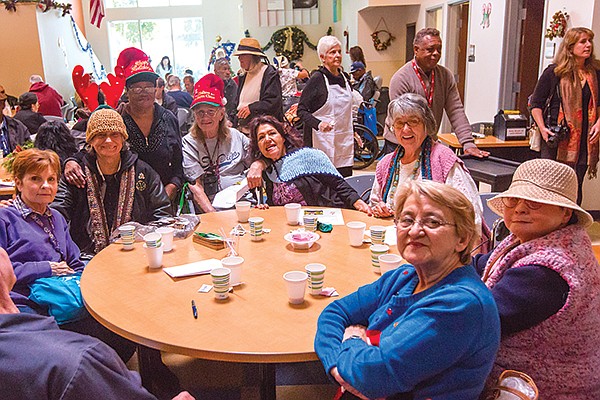
The Wests made oodles of money with call centers. Their telemarketing empire was WATS Marketing of America, later West Corp, the one job, cold-calling, where opportunities are always available. When they sold their stake in 2006, they raked in $1.45 billion.
Pockets bulging, the Wests launched a small fleet of hospitality, private equity, and real estate businesses, most of which operate elderly housing communities and healthcare centers. Their munificence helped open Serving Seniors, a day program that attracts hundreds of attendees, 95 percent of whom live below the poverty line. The Gary and Mary West Senior Wellness at Fourth and Beech, downtown, pulses with fun: line-dancing, tai chi, bingo, knit-and-crochet circles, and round-trip bus jaunts to “Over 60” classes at San Diego State.
Penthouse overlooking Balboa Park; also Pauma Valley
Estimated net worth: $440 million
Major donations: University of San Diego in 2002 and 2012: $30 million | The Old Globe Theater in 2006: $20 million | University of California San Diego in 2000 and 2005: $6 million
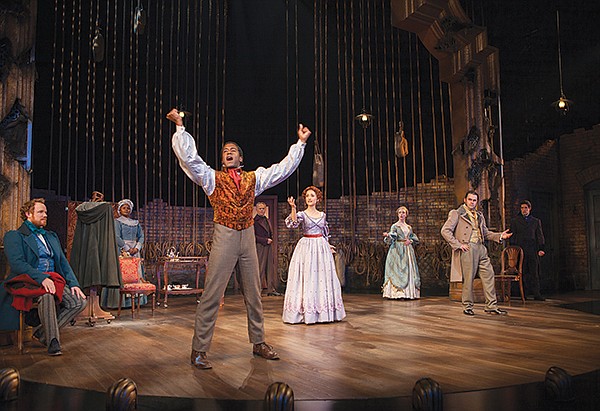
In a half-century career, the biomedical engineer Donald Shiley developed medical implants and surgical machinery. His chief invention was a mechanical heart valve and tracheotomy tubes to enhance breathing during and after surgery. His own eye disease led him to make donations for ophthalmological research and treatment. One such is the Shiley Eye Center that treats more than 100,000 patients per year.
Shiley’s widow, Darlene, a former actress, is a familiar face. Her beaming countenance introduces and encourages the public to support public television as she has; in particular, PBS’s Masterpiece Theater. The apple of her eye has been the Downton Abbey series, for which she showered the Masterpiece Trust with $1 million and unstinting on-screen praise.
Rancho Santa Fe
Estimated net worth: $390 million
Major donations: Scripps Health in 2005, 2007, and 2009: $45 million | Scripps Memorial Hospital in 2004: $2.5 million | San Dieguito Boys and Girls Club in 2005: $1 million
A newspaper baron in the pre-internet days, Howard held a chain of 19 dailies, including the North County Times and the Blade-Citizen in Oceanside. He sold the whole kit and kaboodle in 2002 for $694 million.
His Howard Charitable Foundation, begun in 1999, gives “primarily to health care, educational, and domestic humanitarian charities.”
After searching all evening, I note that the extant public information on Howard, who’s made a parallel fortune in oil and gas exploration and production, will not fill a wine glass. Perhaps that’s just as he wants it.
La Jolla, Hollywood Hills, Beverly Hills
Estimated net worth: $720 million
Major donations: Salk Institute for Biological Studies in 2008, 2009, 2010: $29 million | Waitt Institute of Discovery in 2006 and 2007: $6.9 million | Rady’s Children Hospital in 2000: $3 million
Last December, Waitt was appointed chairman of the board at Salk, succeeding Irwin Jacobs. Waitt cofounded Gateway, famous for its opening gambit — selling personal computers via mail order and shipping them in cardboard boxes, printed with faux Holstein cowhide. A very lucky duck, indeed, he sold his business in 2007 for $710 million, just before the Great Recession devalued the worth of nearly every American company.
The Waitt Foundation has bankrolled researchers at the Salk Institute for Biological Studies to study imaging techniques for the treatment of aging, cancer, and genetic and infectious diseases. In 2015 alone, he and his Salk brethren raised $330 million for the Institute. Waitt, once the apotheosis of the ponytailed capitalist, today devotes the majority of his time to ocean conservation. The Waitt home in La Jolla, down the street from Salk, was placed on the market in 2015 for $22.9 million.
Rancho Santa Fe
Estimated net worth: $440 million
Major donations: Jewish Community Foundation in 2003 and 2004: $14.78 million | Old Globe Theater in 2009 and 2016: $7 million | KPBS in 2000: $2 million
With Irwin Jacobs, Viterbi founded Qualcomm. His wife, Edna, who died in 2015, loved San Diego arts and culture. The Old Globe commemorated her gift of $2 million by naming a theater lobby for her and her husband. (In 2016, Viterbi gave another $5 million to the Old Globe in her memory.) His name graces the University of Southern California School of Engineering, where he earned his PhD and which, in 2004, received a $52 million grant from one of its noteworthiest graduates.
His great invention is the Viterbi algorithm: it is the mathematical formula by which voice and data can travel noiselessly and efficiently across a wireless cellular line. Or as several geeky sources call it — a universal application that decodes the convolutional codes of digital communication. Convolutional? That which is coiled together. Viterbi separated the inseparable cacophony of voice and data, and the discovery has led to the earth’s daily 12.4 billion cell calls. If the guy you’re checking out at Trader Joe’s can’t talk to you because he’s talking on the phone, blame Viterbi.
Rancho Santa Fe
Estimated net worth: $1.2 billion
Major donations: San Diego Jewish Academy scholarship fund in 2007: $7 million | UC San Diego in 2007: $5 million | Elton John’s AIDS Foundation in 2006: $1.06 million
Not sure if it was tit for tat, but that gift to Elton John’s foundation, while not local, had a happy ending when the “Rocket Man” played at Charles and Tanya’s wedding in 2006. Brandes is a stockbroker who evangelizes for value investing. Pre–Great Recession, his Brandes Investment Partners, an institutional money management firm in Carmel Valley, had $120 billion invested in companies whose stock was, when purchased, largely undervalued. With the downturn in 2009, that $120 billion dropped (stock prices and withdrawals) 80 percent of its capital. Only 20 percent, $24 billion, is left in the kitty.
Charles Brandes endured the most expensive and most-gawked-at divorce ever in the county. The 2011 spousal support judgment went to Linda, whom he divorced in 2004. Some of the swag they squabbled over: the value of ten Ferraris ($4.45 million), a $35.5 million Rancho Santa Fe estate (one of seven homes they owned), and his $16 million monthly income. (Yes, Susie, there was a pre-nup.)
Her award: $65–$75 million in assets, $10 million in cash, plus a lifetime of “unforgettable me” payments, $485,000 per month — chicken feed, compared to what he retained. She has used some of her and her former husband’s lucre to endow Southern California charities to the tune of $2 million.
Point Loma
Estimated net worth: $105 million
Major donations: University of San Diego Burnham-Moores Center for Real Estate in 2004: $5 million | Malin Burnham Center for Civic Engagement in 2011: $5 million | Sanford-Burnham Medical Research Institute in 2002: $3 million
What hasn’t Burnham done? He sired San Diego’s First National Bank. He’s been buying and selling properties locally since the 1940s, part of a family endeavor that began in 1891 and was sold in 2008. He maintained an insurance services business for decades. He was a part-owner of the Padres and the Sockers, our arena soccer team. He’s run nine local nonprofits. He’s still active on numerous boards. And he’s a star-class yacht sailor.
Burnham’s medical research institute and real estate center have been partnered projects, thus the joint names. He tried, in 2014 with three others, to buy the Union-Tribune and run it as a nonprofit. But conservative-cause-man Doug Manchester liked the heftier bid from Tribune Publishing of $85 million. They added the U-T, along with the Los Angeles Times, to a new news empire since rebranded with the lower-case name tronc.
Finally, Burnham is on the board of the San Diego–based Katerva, a fund that awards grants for programs activating sustainability. The organization’s mission is “to find, evaluate, and accelerate disruptive sustainable innovations from around the world.” Their 2015 Katerva Award (now called the “Nobel Prize for Sustainability”) went to the Ocean Cleanup, which is using giant sieves to collect plastic debris from the Pacific Ocean’s garbage patch.
Lists categorizing the 1 percent of the 1 percent are endless, from “Billionaires Behaving Badly” to “The Donor Class,” an array organized not by charity but by political patronage. If I follow only Indiana University-Purdue University’s “Million Dollar List,” I leave out many well-known local contributors to worthy causes.
There are San Diegans with staggering wealth and untraceable charity. (You’d think they’d want their philanthropy identified, but such information is, like a billionaire’s tax return, more often secretive than not.) Here’re a few names, their fortune’s source and their estimated net worth:
Brothers Linden and Neal Blue, General Atomics and other defense industries, $1.75 billion. William Lerach, king of class-action lawsuits, $700 million (even after a stint in prison). Frederic Luddy, IT cloud company executive, $550 million. Martin Wygod, WebMD founder and racehorse breeder, $400 million. U.S. Representative for the 49th Congressional District, Darrell Issa, car alarms, $357 million. Phil Mickelson, professional golfer, $350 million. Audrey Geisel, Dr. Seuss books, $250 million.
Not unsurprising, this elite group doesn’t want their gifts publicized (if they do give). They exist in a stratosphere of privacy that their wealth — and our law — protects.
By statute, foundations and charities publish a yearly federal 990 form on which they list where the money they donate goes — not where it comes from. The largest bequest in San Diego County history came in 2014: $275 million to the Sanford-Burnham Medical Research Institute. Giver or givers remain masked.
The Community Foundation of the United Jewish Federation of San Diego has given $216.64 million to 74 organizations between 2000 and 2010. The San Diego Foundation has given $157.01 million to 48 groups between 2000 and 2013. This money went to all sorts of concerns, mostly local, but some nationwide recipients as well. Determining where all this money came from is like looking for a dinghy in the Gulf of Mexico.
The richest Americans, all those in the top 20 percent, are the greatest skinflints — they bestow 1.3 percent of their income on charity — while the poorest Americans, the bottom 20 percent, bestow the most: 3.2 percent. The statistic is weirdly skewed. One person in the top 20 percent with an average income of $92,000 gives $1196 per year; this is twice as much as one person in the bottom 20 percent with an average income of $18,500 who gives $592 per year.
The gap, however, between what those two amounts might buy for the family in the penthouse with a view versus the family in the windowless basement is enormous: a new laptop vs. a month’s worth of groceries.
Is this one reason why the hedge-fund crowd doesn’t want to be identified as givers — because in many cases they aren’t? And how are poor folks’ donations counted — if at all? Homeless handouts, drop-offs at Father Joe’s or the Salvation Army, church collection plates?
What patterns are worth surveying in this precis of local philanthropy? Education, health, and the arts are the biggest recipients. I think this makes good sense.
Carl Jung said there were two reasons why human beings live long past the age of our reproductive function, these days into our 80s and 90s. Why, besides medical advances, do we desire longevity? First, to individuate, that is, discover our deepest calling as a person. And second, to support those institutions that helped raise us and from which we profited mentally, socially, monetarily, and individually. The second reason is why the top 1 percent of Americans live 15 years longer than the bottom 1 percent.
Giving to the college where you were educated and giving to a hospital or a research center where you or a family member received care are both good karma. And yet focusing on institutions that the wealthy’s family and friends will use only peripherally benefits those with the most basic needs — needs that the poor have in abundance but often can’t supply. If we were neighbors to those who scrape by with much less than the American middle class has, most of us would know this.
Maybe it’s true that the less you have the more you share, the more you have, the more you hoard. One study, cited in The Atlantic, found that in 2012, “not one of the top 50 individual charitable gifts [in America] went to a social-service organization or to a charity that principally serves the poor and the dispossessed.” Instead, those 50 gifts went to elite Eastern colleges and prep schools as well as museums and opera companies in the largest cities. Is the word “disproportionate” appropriate here?
What I’d love to see is a ranking of all donors by the amount of their gifts as a percentage of their pre-tax income. Yes, it’s not going to happen. But maybe such disclosure would let us clarify who gains from the phrase, “a tax-deductible contribution.” We know where the San Diego Food Bank’s money went, $34.7 million in 2015: to feed the hungry, some 350,000 every month. Though the contributors want privacy, I wonder why we can’t have a simple comparison between income level and giving. No names, just the facts.
Wealth. If you’ve got it, in spades, you need not consult anyone on what to do with it. You spend it. You hoard it. You pass the booty on to your kids. And you may give it to charity during or after your lifetime, though that’s not required. With any payout, there are taxes. But the tax penalty is far less onerous, if you donate the money.
According to the Indiana University-Purdue University at Indianapolis, a research consortium that tracks our country’s “publicly announced charitable gifts of $1 million or more,” America’s givingest couple is Bill and Melinda Gates. As a couple and through their foundation, the pair has donated $42.48 billion.
Close behind is Warren Buffet, who has gifted $41.13 billion. (One fun fact from the recent HBO documentary Becoming Warren Buffet is that he says he will, before his death, part with 99 percent of the money he’s made in his lifetime.) In 2006, the Oracle of Omaha gave $36.05 billion to the Gates Foundation — yet another avenue to distribute wealth to other distributors. They, in turn, shower money on hundreds of causes, mostly to nongovernment operations. The Gates Foundation’s two major targets are to help control infectious diseases and to eradicate extreme poverty — far from the shores of America.


San Diego’s richest person is someone I’ve never heard of: Gwendolyn Sontheim Meyer. The Rancho Santa Fe resident owns a 7 percent stake in the family business, Cargill, a purveyor of grain and agricultural commodities with forays into financial services and a hedge fund. For a woman whose estimated worth is $4.3 billion, Meyer keeps the lowest of profiles. She lives and trains horses at her Coral Reef Ranch and is a champion jumper.

Forbes magazine, whose definitive billionaire lists are the oligarch’s equivalent of the Oscars’ red carpet, drops Meyer into their “Silver Spoon” bowl — those who did absolutely nothing to earn their fortune. All inheritance. Cargill, America’s largest private company, is independently managed but owned by two families. Forbes says, “They are richer than the Rockefellers, Vanderbilts, and Carnegies combined.” Lord knows I’ve searched, but I can’t find any charity she supports. Maybe her giveaways are anonymous. Maybe Meyer is Scrooge McDuck. But many of the gifts of San Diego’s wealthiest donors are well known, in part, because the check-writing moment, if possible to stage, is a media event charities dream of and publicize.

Among the top local recipients of San Diego’s mega-donors are UC San Diego, the University of San Diego, and San Diego State University. Since 2000, UC San Diego has received $730.18 million in donations from all donors (individuals and foundations, nationwide) whose minimum gift is $1 million. (There are thousands of smaller contributors and contributions.) Other beneficiaries during the same time period include the San Diego Foundation ($112.35 million), the San Diego Revitalization Corporation ($72.05 million), and Rady Children’s Hospital ($60 million).

These San Diego donors listed 1–12 here are not arranged by wealth but by the most dollars donated, on occasion indirectly, to local concerns since 2000. The gifts issue from individuals, couples, or family foundations.
Home: (formerly) Rancho Santa Fe
Estimated net worth: $1.7 billion
Major local donations: The San Diego Salvation Army Kroc Center in City Heights in 2002: $87 million | University of San Diego’s Kroc School of Peace Studies in 2004: $50 million | San Diego Hospice and Palliative Care in 2003: $20 million

Joan (née Joan Mansfield) was the third wife of Ray Kroc, “The Founder” and CEO of McDonald’s. Ray, who called Joan his “blonde beauty,” died in 1984, and she inherited his real estate holdings on which lay his all-beef-patty empire. Before her death, she gave 14 gifts to charities and causes, schools and communities, social and animal services, to the tune of $1.97 billion. (Among Kroc’s offerings was $1 million to buy and distribute Missile Envy, Helen Caldicott’s 1984 polemic against nuclear proliferation: a copy was sent, 535 in total, to each member of Congress.)
Another Kroc bequest sent $225 million to National Public Radio, which included $5 million for KPBS. She funded the San Diego Zoo and the Opera at $5 million each as well as the Humane Society and Catholic Charities through their national chapters. Those bestowals vitalized local branches. Subsequently, a new state-of-the-art humane society was built on Gaines Street. As part of her largesse, $1.6 billion of the $1.97 billion went to the Salvation Army — the largest single gift to a charity ever recorded — to establish Kroc Centers throughout the country.
La Jolla
Estimated net worth: $1.3 billion
Major donations: University of California San Diego in 2000, 2003, 2004, and 2010: $208.3 million | San Diego Symphony in 2002 and 2003: $120 million | Salk Institute for Biological Studies in 2003, 2008, 2010: $23 million

Jacobs made his fortune as cofounder of Qualcomm, where he helped pioneer the communications revolution. The electrical engineer designed some of the first cell-phone technology still in use today. He taught at University of California San Diego from 1966 to 1972, where he continues to endow the Jacobs School of Engineering.
The lion’s share of his other multimillion-dollar gifts has been to higher education as well as to groups that support the arts, culture, and the humanities. Jacobs and his wife, married for 63 years, have also helped carry the La Jolla Athenaeum Library, KPBS radio, the San Diego Natural History Museum, the Central Library, and an overhaul of the ingress and egress to Balboa Park. Over the years, they have contributed $636 million to charities and foundations.
La Jolla
Estimated net worth: $620 million
Major donations: San Diego Children’s Hospital in 2006 and 2014: $180 million | UC San Diego’s Rady School of Management in 2004 and 2015: $130 million | San Diego Zoo in 2013: $10 million

Investment superstar Rady is the chief executive of American Assets Trust, a New York Stock Exchange–traded company that he started in 1967. The real estate investment trust employs 152 people in San Diego and owns or manages multi-family residential and office buildings as well as shopping malls such as Carmel Mountain Plaza in Carmel Valley and resorts such as Embassy Suites in Waikiki, Hawaii. Rady’s annual salary is $757,222.
Graduates of Rady’s School of Management, among the most prestigious schools of business in America, have incubated more than 80 San Diego companies and hatched local revenues totaling $2 billion. Among Rady’s medical interests is pediatric genomics. His money has pushed researchers to decode diseases such as obesity, autism, and asthma, especially as they enfeeble children.
San Diego
Estimated net worth: $800 million
Major donations: City Heights Development Corporation: $200 million | San Diego Revitalization Corporation in 2001: $40 million | San Diego Foundation in 2004: $15.5 million

Robert, son of Sol, big-bulk creator of San Diego’s Price Club, runs the erstwhile Price Family Charitable Fund, which is now Price Philanthropies Foundation. Sol, who died in 2009 at 93, sold his warehouse business to Costco in 1994 for $2 billion. The family then built PriceSmart, an international wholesaler, and still owns a 28 percent share. Its annual sales are nearly $3 billion.
Sol, alarmed by the late-1980s rise in gang violence, crack cocaine, and generational poverty in City Heights, took the community under his investment wing. The multiethnic enclave still draws immigrants from war-torn nations to its dense four-square-mile neighborhood, crisscrossed by freeways and thoroughfares and dotted with Craftsman homes.
Benefiting its 74,000 people, shoulder-to-shoulder between Colina Park and Ridgeview, Corridor and Fairmount Park, are low-income apartments and townhomes, a new library and police station, and two new schools. The latest addition is a children’s clinic, catering to families with mental health issues, whose operating expenses Robert Price shored up with a $1.4 million grant.
Point Loma
Estimated net worth: $575 million
Major donations: Sanford Burnham Prebys Medical Discovery Center in 2016: $100 million | Conrad Prebys Performing Arts Center: $65 million | Scripps Health in 2006, 2009, and 2011: $55 million
For years, I thought “Conrad Prebys” was a construction company that designed and erected buildings. I didn’t realize there was a man who’d ponied up the money for these health, education, and arts centers, winning, hands down, the citywide sweepstakes for naming rights. His name is immortalized on a collection of buildings he funded: the Conrad Prebys Aztec Student Union at San Diego State, UC San Diego Prebys Concert Hall, the Conrad Prebys Elephant Care Center at the zoo, and the Conrad Prebys Performing Arts Center — future home of the La Jolla Music Society — set to open in 2019. They’re already calling it “The Conrad.”
Prebys, who died of cancer, donated $45 million for the Conrad Prebys Cardiovascular Institute, a heart hospital in the Golden Triangle. I visited the Prebys as a patient last year. Post-surgery, for my overnight recovery, I was wheeled into a private room. “There must be some mistake,” I said, worried I’d owe extra. “No mistake,” the nurse said. “Mr. Prebys insisted everyone have his own room.”
The San Diego State alumnus, who endowed a chair in its Biology Department for research into viromics (the genetics of viruses), built his empire developing real estate. Over 50 years, he was a housing builder extraordinaire, owning 90 properties and 8000 rental units through his Pacific Beach Progress Construction and Management Company. His life partner is Debbie Turner, who continues to give away money. Indeed, San Diego musicians might still be playing in garages if not for Prebys’s demanding ear. The best estimate of his local donations floats, like the Jacobses’ buoy, near the half-billion mark.
Rancho Santa Fe
Estimated net worth: $1.5 billion
Major donations: West Wireless Health Institute in 2009 and 2010: $70 million | Gary and Mary West Senior Emergency Care Unit at UC San Diego: $11.8 million | Gary and Mary West Senior Wellness Center: $2 million

The Wests made oodles of money with call centers. Their telemarketing empire was WATS Marketing of America, later West Corp, the one job, cold-calling, where opportunities are always available. When they sold their stake in 2006, they raked in $1.45 billion.
Pockets bulging, the Wests launched a small fleet of hospitality, private equity, and real estate businesses, most of which operate elderly housing communities and healthcare centers. Their munificence helped open Serving Seniors, a day program that attracts hundreds of attendees, 95 percent of whom live below the poverty line. The Gary and Mary West Senior Wellness at Fourth and Beech, downtown, pulses with fun: line-dancing, tai chi, bingo, knit-and-crochet circles, and round-trip bus jaunts to “Over 60” classes at San Diego State.
Penthouse overlooking Balboa Park; also Pauma Valley
Estimated net worth: $440 million
Major donations: University of San Diego in 2002 and 2012: $30 million | The Old Globe Theater in 2006: $20 million | University of California San Diego in 2000 and 2005: $6 million

In a half-century career, the biomedical engineer Donald Shiley developed medical implants and surgical machinery. His chief invention was a mechanical heart valve and tracheotomy tubes to enhance breathing during and after surgery. His own eye disease led him to make donations for ophthalmological research and treatment. One such is the Shiley Eye Center that treats more than 100,000 patients per year.
Shiley’s widow, Darlene, a former actress, is a familiar face. Her beaming countenance introduces and encourages the public to support public television as she has; in particular, PBS’s Masterpiece Theater. The apple of her eye has been the Downton Abbey series, for which she showered the Masterpiece Trust with $1 million and unstinting on-screen praise.
Rancho Santa Fe
Estimated net worth: $390 million
Major donations: Scripps Health in 2005, 2007, and 2009: $45 million | Scripps Memorial Hospital in 2004: $2.5 million | San Dieguito Boys and Girls Club in 2005: $1 million
A newspaper baron in the pre-internet days, Howard held a chain of 19 dailies, including the North County Times and the Blade-Citizen in Oceanside. He sold the whole kit and kaboodle in 2002 for $694 million.
His Howard Charitable Foundation, begun in 1999, gives “primarily to health care, educational, and domestic humanitarian charities.”
After searching all evening, I note that the extant public information on Howard, who’s made a parallel fortune in oil and gas exploration and production, will not fill a wine glass. Perhaps that’s just as he wants it.
La Jolla, Hollywood Hills, Beverly Hills
Estimated net worth: $720 million
Major donations: Salk Institute for Biological Studies in 2008, 2009, 2010: $29 million | Waitt Institute of Discovery in 2006 and 2007: $6.9 million | Rady’s Children Hospital in 2000: $3 million
Last December, Waitt was appointed chairman of the board at Salk, succeeding Irwin Jacobs. Waitt cofounded Gateway, famous for its opening gambit — selling personal computers via mail order and shipping them in cardboard boxes, printed with faux Holstein cowhide. A very lucky duck, indeed, he sold his business in 2007 for $710 million, just before the Great Recession devalued the worth of nearly every American company.
The Waitt Foundation has bankrolled researchers at the Salk Institute for Biological Studies to study imaging techniques for the treatment of aging, cancer, and genetic and infectious diseases. In 2015 alone, he and his Salk brethren raised $330 million for the Institute. Waitt, once the apotheosis of the ponytailed capitalist, today devotes the majority of his time to ocean conservation. The Waitt home in La Jolla, down the street from Salk, was placed on the market in 2015 for $22.9 million.
Rancho Santa Fe
Estimated net worth: $440 million
Major donations: Jewish Community Foundation in 2003 and 2004: $14.78 million | Old Globe Theater in 2009 and 2016: $7 million | KPBS in 2000: $2 million
With Irwin Jacobs, Viterbi founded Qualcomm. His wife, Edna, who died in 2015, loved San Diego arts and culture. The Old Globe commemorated her gift of $2 million by naming a theater lobby for her and her husband. (In 2016, Viterbi gave another $5 million to the Old Globe in her memory.) His name graces the University of Southern California School of Engineering, where he earned his PhD and which, in 2004, received a $52 million grant from one of its noteworthiest graduates.
His great invention is the Viterbi algorithm: it is the mathematical formula by which voice and data can travel noiselessly and efficiently across a wireless cellular line. Or as several geeky sources call it — a universal application that decodes the convolutional codes of digital communication. Convolutional? That which is coiled together. Viterbi separated the inseparable cacophony of voice and data, and the discovery has led to the earth’s daily 12.4 billion cell calls. If the guy you’re checking out at Trader Joe’s can’t talk to you because he’s talking on the phone, blame Viterbi.
Rancho Santa Fe
Estimated net worth: $1.2 billion
Major donations: San Diego Jewish Academy scholarship fund in 2007: $7 million | UC San Diego in 2007: $5 million | Elton John’s AIDS Foundation in 2006: $1.06 million
Not sure if it was tit for tat, but that gift to Elton John’s foundation, while not local, had a happy ending when the “Rocket Man” played at Charles and Tanya’s wedding in 2006. Brandes is a stockbroker who evangelizes for value investing. Pre–Great Recession, his Brandes Investment Partners, an institutional money management firm in Carmel Valley, had $120 billion invested in companies whose stock was, when purchased, largely undervalued. With the downturn in 2009, that $120 billion dropped (stock prices and withdrawals) 80 percent of its capital. Only 20 percent, $24 billion, is left in the kitty.
Charles Brandes endured the most expensive and most-gawked-at divorce ever in the county. The 2011 spousal support judgment went to Linda, whom he divorced in 2004. Some of the swag they squabbled over: the value of ten Ferraris ($4.45 million), a $35.5 million Rancho Santa Fe estate (one of seven homes they owned), and his $16 million monthly income. (Yes, Susie, there was a pre-nup.)
Her award: $65–$75 million in assets, $10 million in cash, plus a lifetime of “unforgettable me” payments, $485,000 per month — chicken feed, compared to what he retained. She has used some of her and her former husband’s lucre to endow Southern California charities to the tune of $2 million.
Point Loma
Estimated net worth: $105 million
Major donations: University of San Diego Burnham-Moores Center for Real Estate in 2004: $5 million | Malin Burnham Center for Civic Engagement in 2011: $5 million | Sanford-Burnham Medical Research Institute in 2002: $3 million
What hasn’t Burnham done? He sired San Diego’s First National Bank. He’s been buying and selling properties locally since the 1940s, part of a family endeavor that began in 1891 and was sold in 2008. He maintained an insurance services business for decades. He was a part-owner of the Padres and the Sockers, our arena soccer team. He’s run nine local nonprofits. He’s still active on numerous boards. And he’s a star-class yacht sailor.
Burnham’s medical research institute and real estate center have been partnered projects, thus the joint names. He tried, in 2014 with three others, to buy the Union-Tribune and run it as a nonprofit. But conservative-cause-man Doug Manchester liked the heftier bid from Tribune Publishing of $85 million. They added the U-T, along with the Los Angeles Times, to a new news empire since rebranded with the lower-case name tronc.
Finally, Burnham is on the board of the San Diego–based Katerva, a fund that awards grants for programs activating sustainability. The organization’s mission is “to find, evaluate, and accelerate disruptive sustainable innovations from around the world.” Their 2015 Katerva Award (now called the “Nobel Prize for Sustainability”) went to the Ocean Cleanup, which is using giant sieves to collect plastic debris from the Pacific Ocean’s garbage patch.
Lists categorizing the 1 percent of the 1 percent are endless, from “Billionaires Behaving Badly” to “The Donor Class,” an array organized not by charity but by political patronage. If I follow only Indiana University-Purdue University’s “Million Dollar List,” I leave out many well-known local contributors to worthy causes.
There are San Diegans with staggering wealth and untraceable charity. (You’d think they’d want their philanthropy identified, but such information is, like a billionaire’s tax return, more often secretive than not.) Here’re a few names, their fortune’s source and their estimated net worth:
Brothers Linden and Neal Blue, General Atomics and other defense industries, $1.75 billion. William Lerach, king of class-action lawsuits, $700 million (even after a stint in prison). Frederic Luddy, IT cloud company executive, $550 million. Martin Wygod, WebMD founder and racehorse breeder, $400 million. U.S. Representative for the 49th Congressional District, Darrell Issa, car alarms, $357 million. Phil Mickelson, professional golfer, $350 million. Audrey Geisel, Dr. Seuss books, $250 million.
Not unsurprising, this elite group doesn’t want their gifts publicized (if they do give). They exist in a stratosphere of privacy that their wealth — and our law — protects.
By statute, foundations and charities publish a yearly federal 990 form on which they list where the money they donate goes — not where it comes from. The largest bequest in San Diego County history came in 2014: $275 million to the Sanford-Burnham Medical Research Institute. Giver or givers remain masked.
The Community Foundation of the United Jewish Federation of San Diego has given $216.64 million to 74 organizations between 2000 and 2010. The San Diego Foundation has given $157.01 million to 48 groups between 2000 and 2013. This money went to all sorts of concerns, mostly local, but some nationwide recipients as well. Determining where all this money came from is like looking for a dinghy in the Gulf of Mexico.
The richest Americans, all those in the top 20 percent, are the greatest skinflints — they bestow 1.3 percent of their income on charity — while the poorest Americans, the bottom 20 percent, bestow the most: 3.2 percent. The statistic is weirdly skewed. One person in the top 20 percent with an average income of $92,000 gives $1196 per year; this is twice as much as one person in the bottom 20 percent with an average income of $18,500 who gives $592 per year.
The gap, however, between what those two amounts might buy for the family in the penthouse with a view versus the family in the windowless basement is enormous: a new laptop vs. a month’s worth of groceries.
Is this one reason why the hedge-fund crowd doesn’t want to be identified as givers — because in many cases they aren’t? And how are poor folks’ donations counted — if at all? Homeless handouts, drop-offs at Father Joe’s or the Salvation Army, church collection plates?
What patterns are worth surveying in this precis of local philanthropy? Education, health, and the arts are the biggest recipients. I think this makes good sense.
Carl Jung said there were two reasons why human beings live long past the age of our reproductive function, these days into our 80s and 90s. Why, besides medical advances, do we desire longevity? First, to individuate, that is, discover our deepest calling as a person. And second, to support those institutions that helped raise us and from which we profited mentally, socially, monetarily, and individually. The second reason is why the top 1 percent of Americans live 15 years longer than the bottom 1 percent.
Giving to the college where you were educated and giving to a hospital or a research center where you or a family member received care are both good karma. And yet focusing on institutions that the wealthy’s family and friends will use only peripherally benefits those with the most basic needs — needs that the poor have in abundance but often can’t supply. If we were neighbors to those who scrape by with much less than the American middle class has, most of us would know this.
Maybe it’s true that the less you have the more you share, the more you have, the more you hoard. One study, cited in The Atlantic, found that in 2012, “not one of the top 50 individual charitable gifts [in America] went to a social-service organization or to a charity that principally serves the poor and the dispossessed.” Instead, those 50 gifts went to elite Eastern colleges and prep schools as well as museums and opera companies in the largest cities. Is the word “disproportionate” appropriate here?
What I’d love to see is a ranking of all donors by the amount of their gifts as a percentage of their pre-tax income. Yes, it’s not going to happen. But maybe such disclosure would let us clarify who gains from the phrase, “a tax-deductible contribution.” We know where the San Diego Food Bank’s money went, $34.7 million in 2015: to feed the hungry, some 350,000 every month. Though the contributors want privacy, I wonder why we can’t have a simple comparison between income level and giving. No names, just the facts.
Wealth. If you’ve got it, in spades, you need not consult anyone on what to do with it. You spend it. You hoard it. You pass the booty on to your kids. And you may give it to charity during or after your lifetime, though that’s not required. With any payout, there are taxes. But the tax penalty is far less onerous, if you donate the money.
According to the Indiana University-Purdue University at Indianapolis, a research consortium that tracks our country’s “publicly announced charitable gifts of $1 million or more,” America’s givingest couple is Bill and Melinda Gates. As a couple and through their foundation, the pair has donated $42.48 billion.
Close behind is Warren Buffet, who has gifted $41.13 billion. (One fun fact from the recent HBO documentary Becoming Warren Buffet is that he says he will, before his death, part with 99 percent of the money he’s made in his lifetime.) In 2006, the Oracle of Omaha gave $36.05 billion to the Gates Foundation — yet another avenue to distribute wealth to other distributors. They, in turn, shower money on hundreds of causes, mostly to nongovernment operations. The Gates Foundation’s two major targets are to help control infectious diseases and to eradicate extreme poverty — far from the shores of America.
Comments